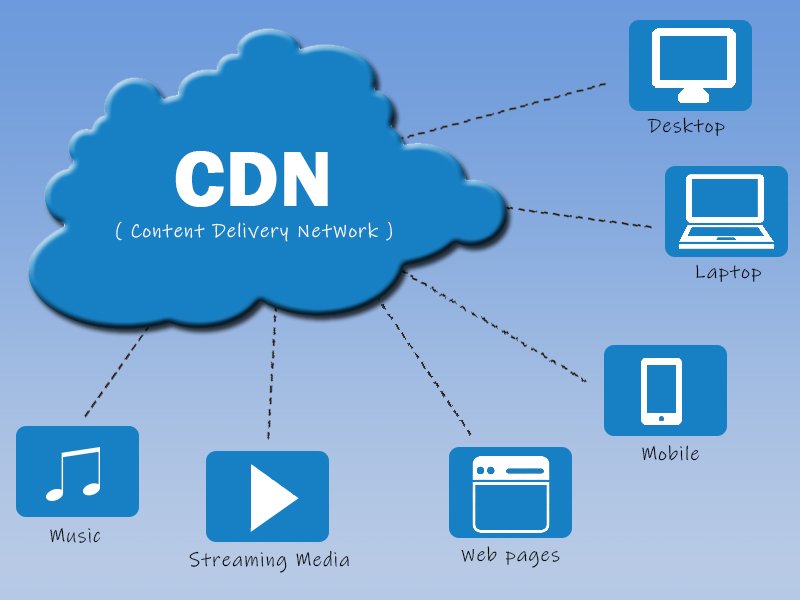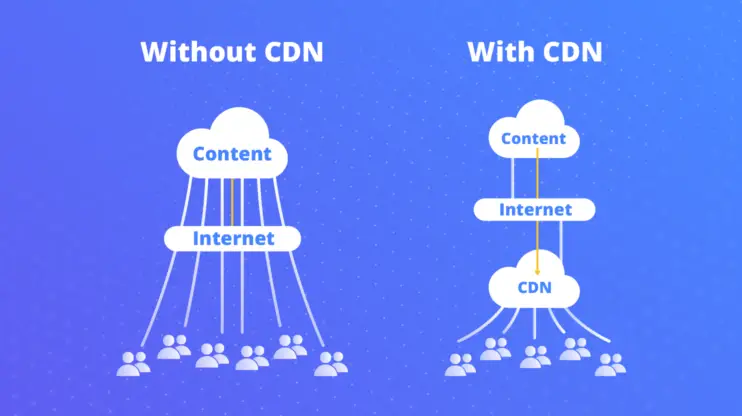Trends Shaping the Future of Content Delivery Networks (CDNs)

1. Edge Computing and 5G:

- Edge computing and 5G networks will enhance CDN capabilities by bringing content closer to end-users, reducing latency and improving user experience.
2. AI and Machine Learning:

- Artificial intelligence (AI) and machine learning (ML) will automate CDN operations, optimize content delivery, and personalize content experiences.
3. Cloud-Native CDNs:
- CDNs will become increasingly cloud-native, leveraging scalable and cost-effective cloud infrastructure for content caching and distribution.
4. Video Streaming Optimization:
- CDNs will focus on optimizing video streaming experiences, with features such as adaptive bitrate streaming, buffering reduction, and video quality monitoring.
5. Security and Privacy:
- Security and privacy will remain paramount for CDNs, with enhanced encryption, DDoS protection, and user privacy safeguards.
Predictions for the Future of CDNs
1. Multi-CDN and Hybrid Solutions:
- Enterprises will adopt multi-CDN and hybrid solutions to balance cost, performance, and reliability across different regions and services.
2. Real-Time Analytics and Monitoring:
- CDNs will provide real-time analytics and monitoring dashboards, enabling proactive identification and resolution of network issues.
3. Regionalization and Data Localization:
- CDNs will establish regional points of presence (PoPs) and support data localization to comply with regulatory requirements.
4. Personalized Content Experiences:
- CDNs will leverage AI and ML to analyze user behavior and deliver personalized content experiences tailored to individual preferences.
5. Emerging Use Cases in VR/AR and IoT:
- CDNs will play a crucial role in delivering high-bandwidth, low-latency content for emerging technologies such as virtual reality (VR), augmented reality (AR), and the Internet of Things (IoT).
6. Sustainability and Efficiency:
- CDNs will prioritize sustainability by optimizing energy consumption and reducing carbon emissions through green infrastructure and energy-efficient algorithms.
Conclusion
The future of content delivery networks is bright, with advancements in technology and emerging use cases driving innovation. By embracing trends like edge computing, AI, cloud-native solutions, and personalized content experiences, CDNs will continue to play a vital role in delivering seamless and engaging digital content to users worldwide.## The Future Of Content Delivery Networks: Trends And Predictions
Executive Summary
Content delivery networks (CDNs) are a critical part of the modern internet, delivering content to users quickly and reliably. As the internet continues to evolve, so too will the role of CDNs. This report explores the latest trends and predictions for the future of CDNs, including the rise of new technologies, the increasing importance of security, and the growing demand for personalization.
Introduction
CDNs have become an essential part of the internet, delivering content to users quickly and reliably. By caching content on servers located around the world, CDNs can reduce latency and improve the user experience. As the internet continues to evolve, so too will the role of CDNs. This report explores the latest trends and predictions for the future of CDNs, identifying key areas where they will continue to play a vital role.
FAQs
-
What is a CDN?
A CDN is a network of servers distributed across the globe that work together to deliver content to users quickly and reliably. -
What are the benefits of using a CDN?
CDNs offer a number of benefits, including reduced latency, improved performance, increased security, and lower costs. -
How do I choose the right CDN for my needs?
When choosing a CDN, you should consider factors such as your traffic volume, the geographic distribution of your users, and your security requirements.
Top 5 Subtopics
1. The Rise of New Technologies
The rise of new technologies, such as 5G and the Internet of Things (IoT), will have a significant impact on the future of CDNs. 5G will provide faster speeds and lower latency, while IoT will connect billions of new devices to the internet. These trends will create new challenges and opportunities for CDNs.
- Increased demand for capacity: 5G and IoT will generate a significant amount of new traffic, which will put a strain on CDNs. CDNs will need to invest in new infrastructure to meet this demand.
- New security challenges: 5G and IoT will also introduce new security challenges for CDNs. CDNs will need to develop new security measures to protect against cyberattacks.
- Edge computing: Edge computing will allow CDNs to process content closer to users, which will reduce latency and improve performance.
2. The Increasing Importance of Security
Security is becoming increasingly important for CDNs. Cyberattacks are on the rise, and CDNs need to be able to protect their customers’ data and content.
- DDoS attacks: DDoS attacks are a major threat to CDNs. CDNs need to be able to mitigate DDoS attacks without disrupting service.
- Malware protection: CDNs need to be able to protect their customers’ content from malware.
- Data privacy: CDNs need to comply with data privacy regulations, such as the General Data Protection Regulation (GDPR).
3. The Growing Demand for Personalization
Consumers are increasingly demanding personalized experiences. CDNs need to be able to deliver content that is tailored to each individual user.
- User profiling: CDNs can use user profiling to deliver content that is relevant to each individual user.
- Geolocation: CDNs can use geolocation to deliver content that is tailored to the user’s location.
- Device detection: CDNs can use device detection to deliver content that is optimized for the user’s device.
4. The Impact of Artificial Intelligence (AI)
Artificial intelligence (AI) is transforming the way businesses operate. CDNs are using AI to improve their performance and security.
- Traffic optimization: AI can be used to optimize traffic flow and reduce latency.
- Security threat detection: AI can be used to detect and mitigate security threats.
- Content delivery optimization: AI can be used to optimize the delivery of content based on user preferences.
5. The Future of Content Delivery
The future of content delivery is bright. CDNs will continue to play a vital role in delivering content to users quickly and reliably. However, the role of CDNs will evolve as new technologies emerge and consumer demands change.
Conclusion
CDNs are a critical part of the modern internet, and their importance will only grow in the years to come. By understanding the latest trends and predictions, businesses can prepare for the future of content delivery and ensure that they are delivering content to their customers in the most effective way possible.
Keyword Tags
- Content delivery networks
- CDN trends
- CDN predictions
- Future of content delivery
- Content delivery technologies
